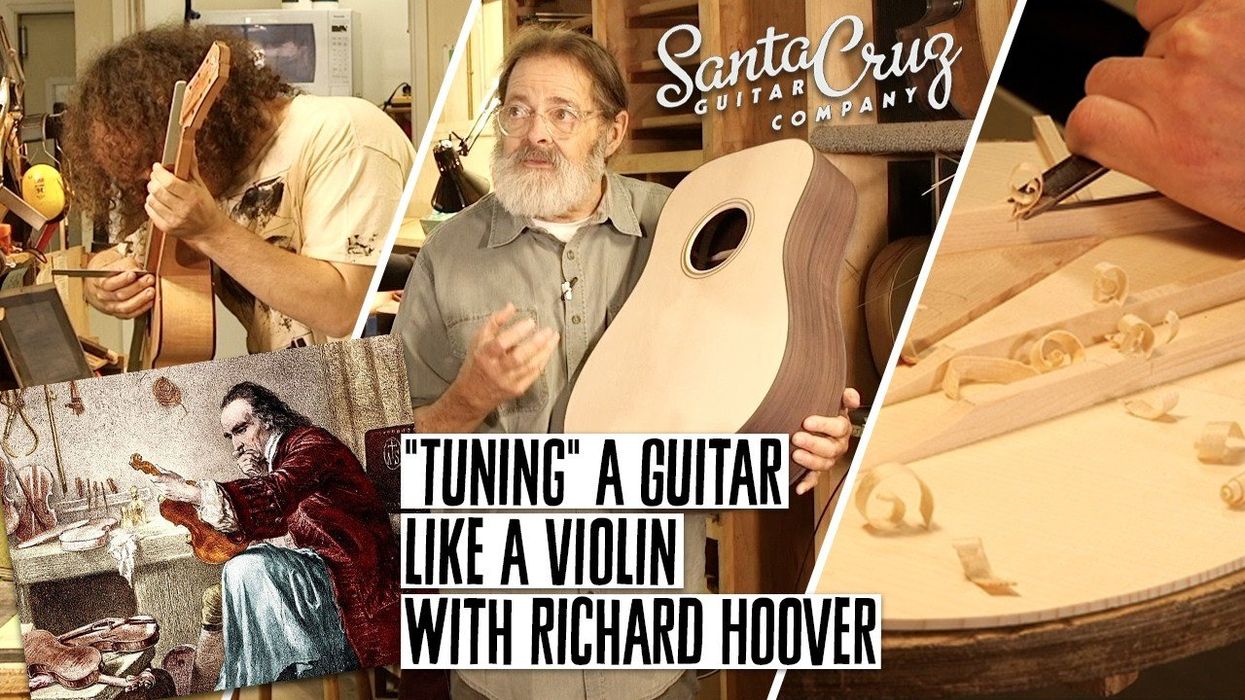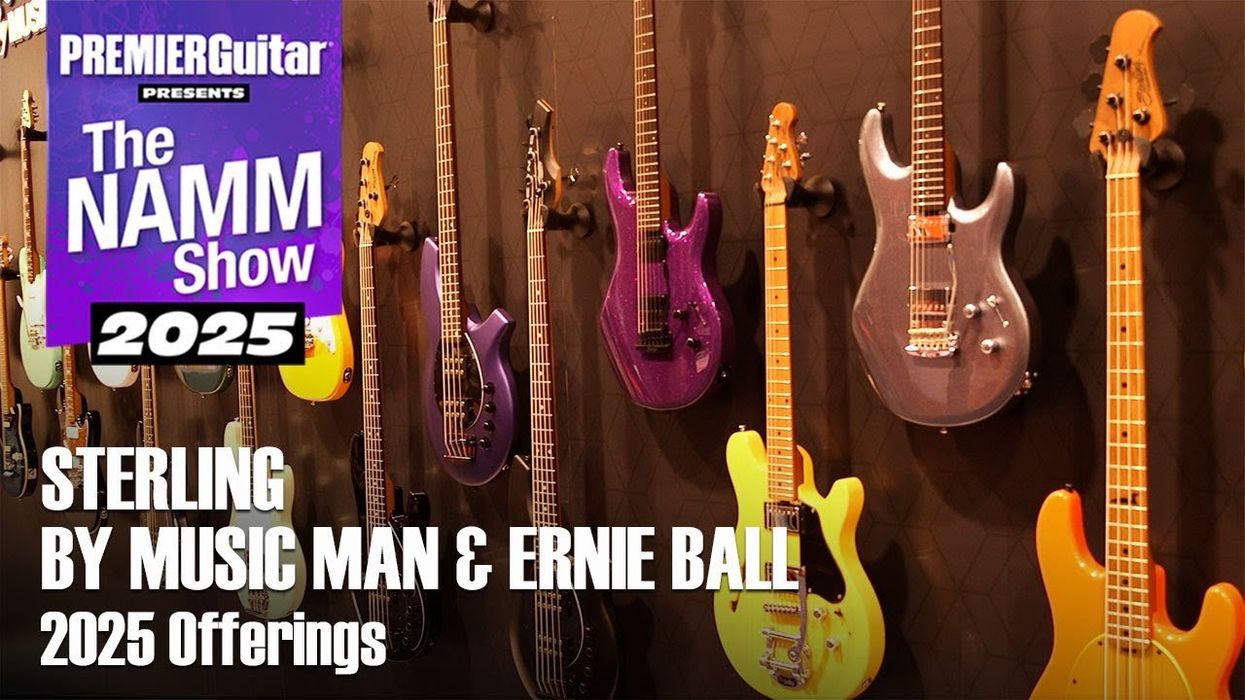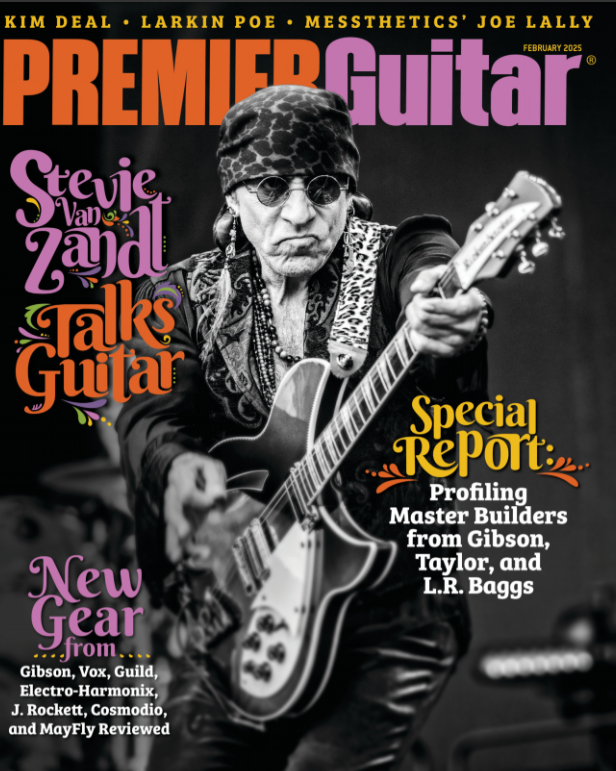What’s more punk rock than dueling, angry P-90s straight into classic Marshalls? Nothing!
Nearing their fourth decade as a band and celebrating their just-released 17th album, Age of Unreason, the punk-rock pioneers toured the south including a rare Nashville stop.
PG’s Perry Bean stopped by Music City’s Cannery Ballroom before soundcheck to check out how punk’s elder statesmen Mike Dimkich, Brian Baker, and bassist Jay Bentley (above) still don’t use pedals, why they prefer P-90s over humbuckers, and explain what piece of their rig was inspired by our AC/DC episode.

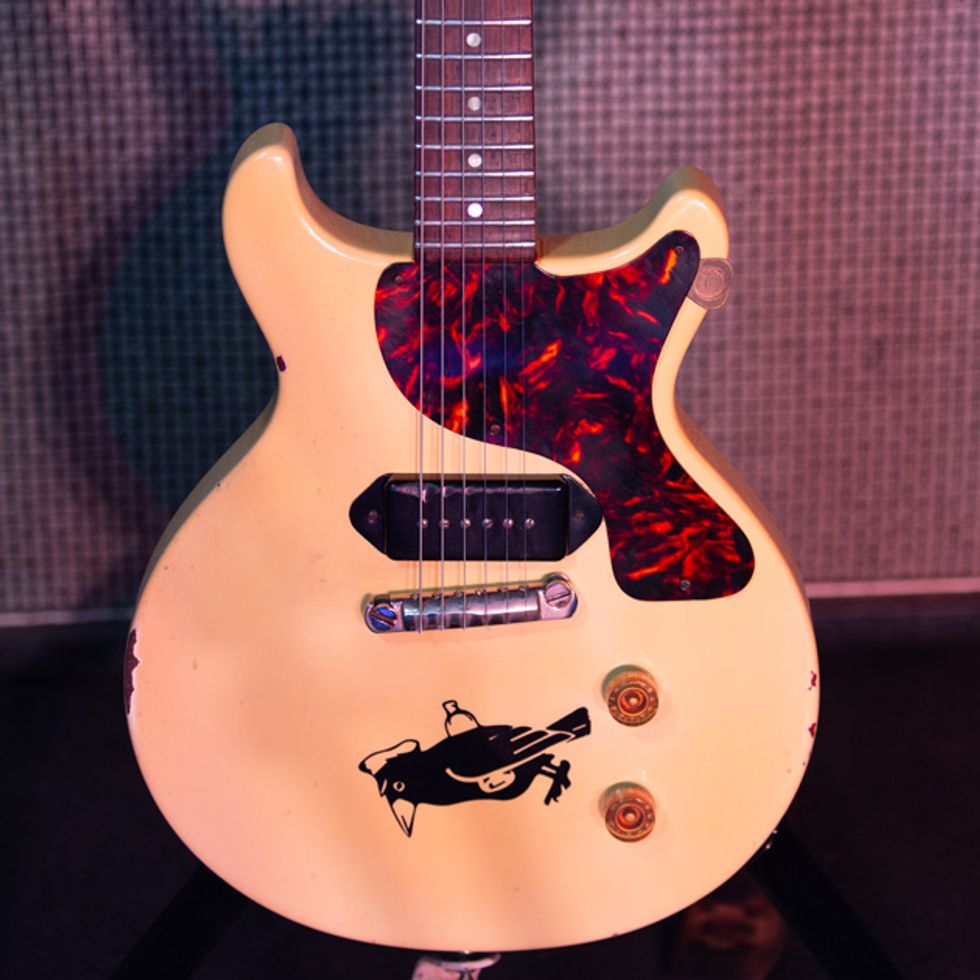
Guitarist Mike Dimkich’s (formerly of the Cult, Suckerpunch, Channel 3, and Steve Jones) main ride for Bad Religion is this refin 1958 Gibson Les Paul Junior. Before becoming part of Dimkich’s arsenal, this gem had several headstock repairs. You may ask, how does he know for sure? Well, before buying the guitar in Canada, fellow guitarist Brian Baker and the shop suggested he take the guitar next door to the porn store to use their black light to identify any cracks or breaks, and voilà, surgery was found! Besides sounding like a beast, he loves this one because it’s the Johnny Thunders model with a Steve Jones refin color—two of his favorite guitarists of all time. He still owns the original P-90 but swapped it out for a J. M. Rolph dog-ear P-90. The band tunes down a half step and all of Mike’s guitars take .011–.052 strings.
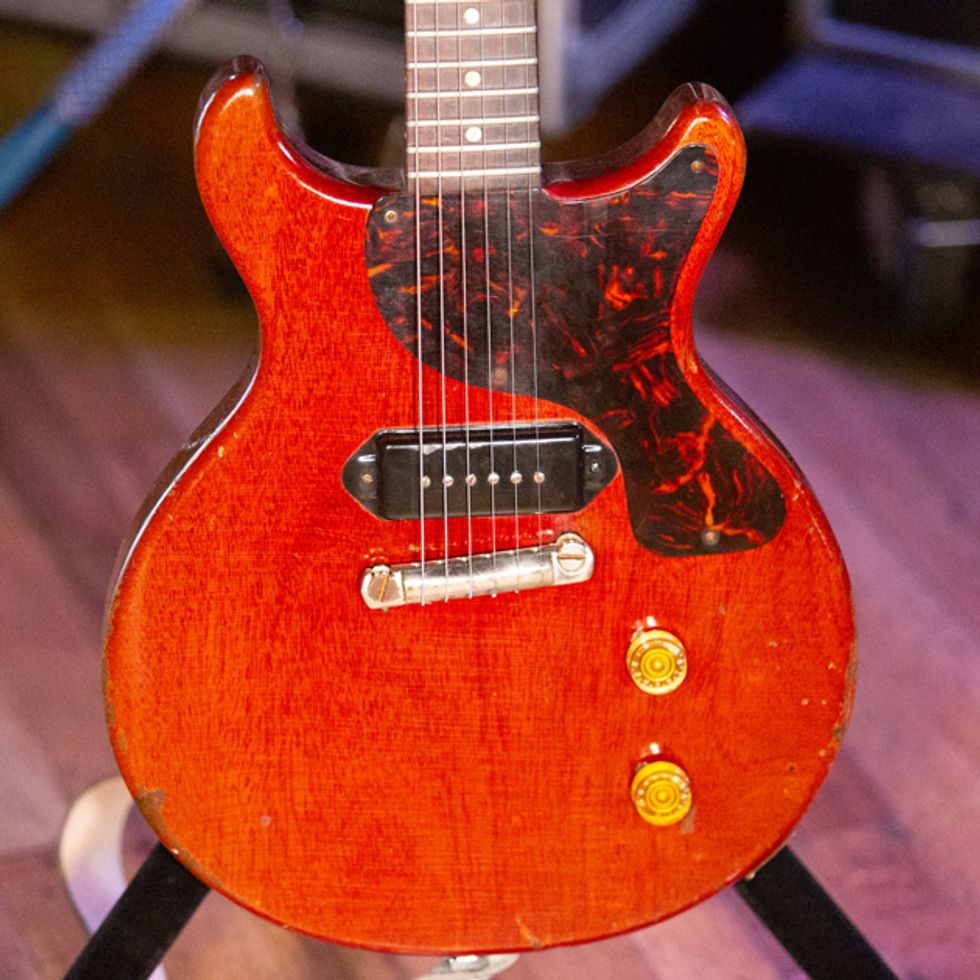
Mike Dimkich’s other main stage guitar is zeroed in as a late 1959 Les Paul Junior because of its rounded edges on the body and huge neck profile. Upgrades include a Seymour Duncan Antiquity P-90 and patent-pending Grover tuners.
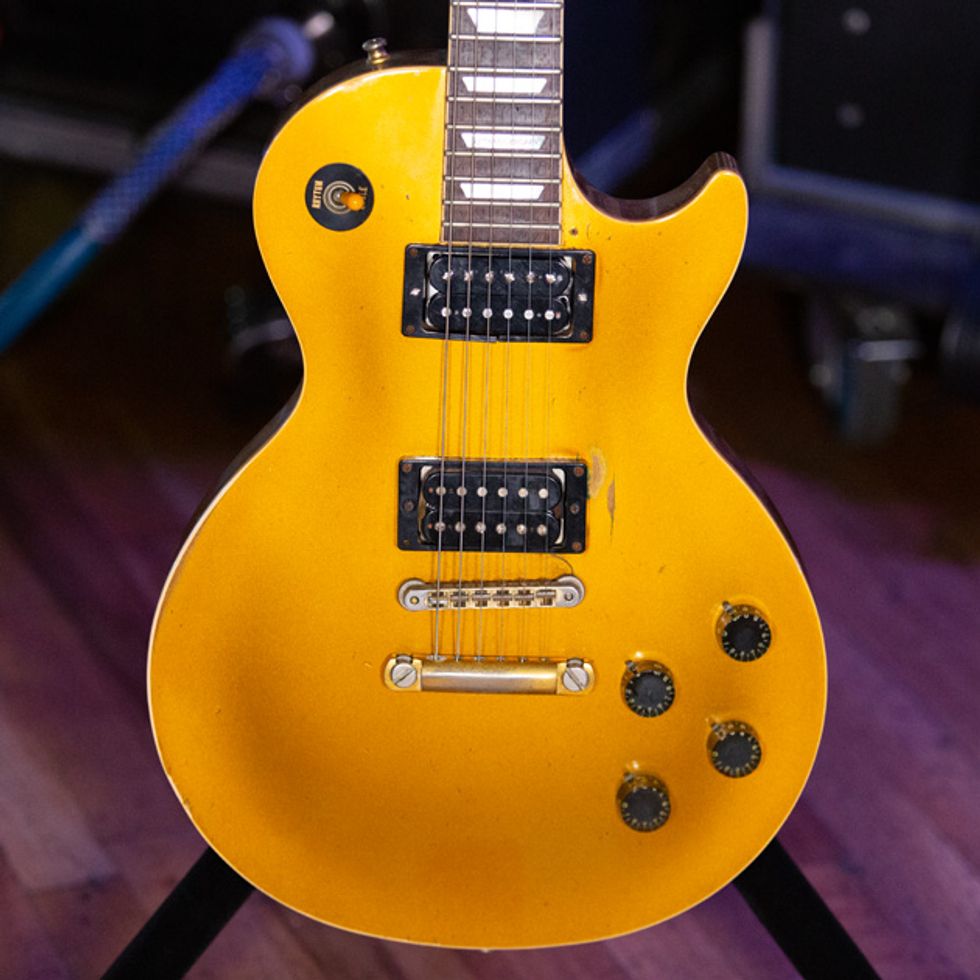
This 30th Anniversary 1982 Gibson Les Paul goldtop rarely sees stage time, but it’s the second guitar Mike Dimkich ever bought out of the Recycler for about $400.
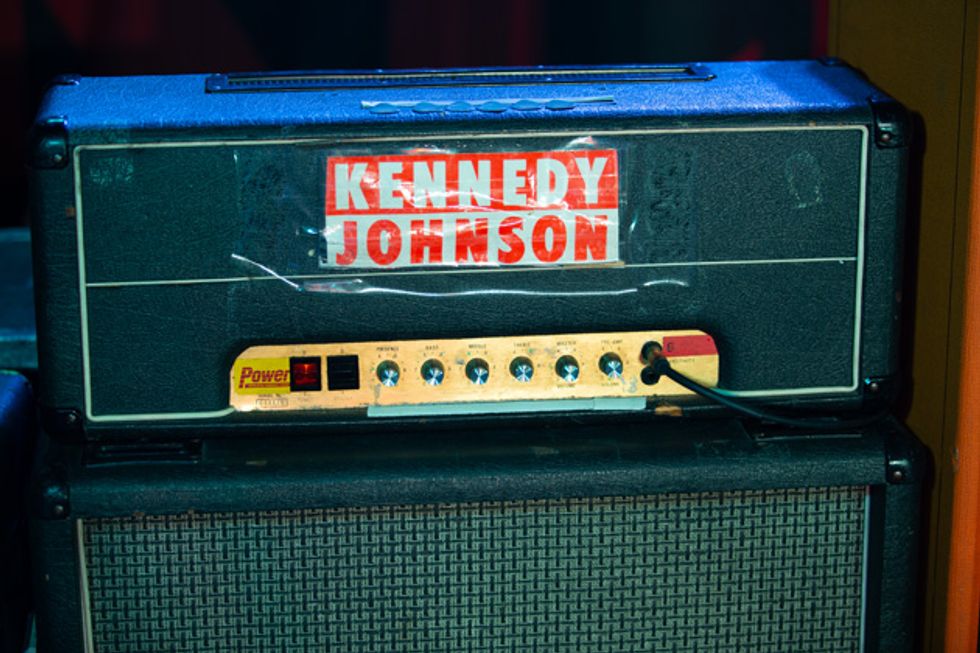
Here’s part one of Mike Dimkich’s two-amp setup—a 100-watt Marshall JMP. He bought the head for $350 and the 4x12 for $300. Both were a part of his sound in the Cult and his early days in Bad Religion.
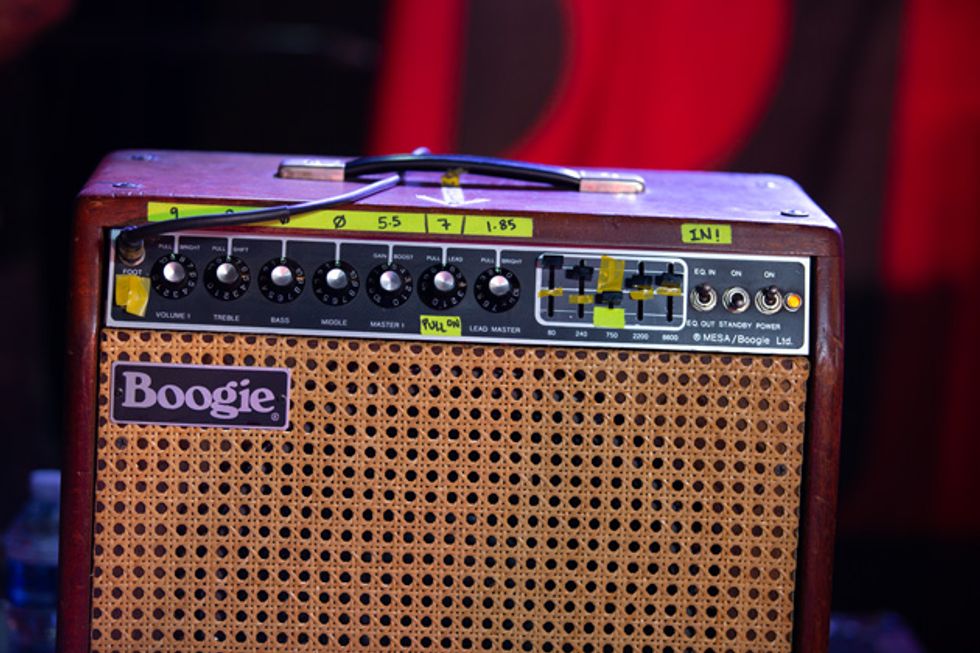
Another major influence for Mike Dimkich is Clash guitarist Mick Jones who used a similar Mesa/Boogie Mark II bamboo-enclosed combo. The 12" speaker is detached and instead the combo feeds a Marshall 4x12 cab.
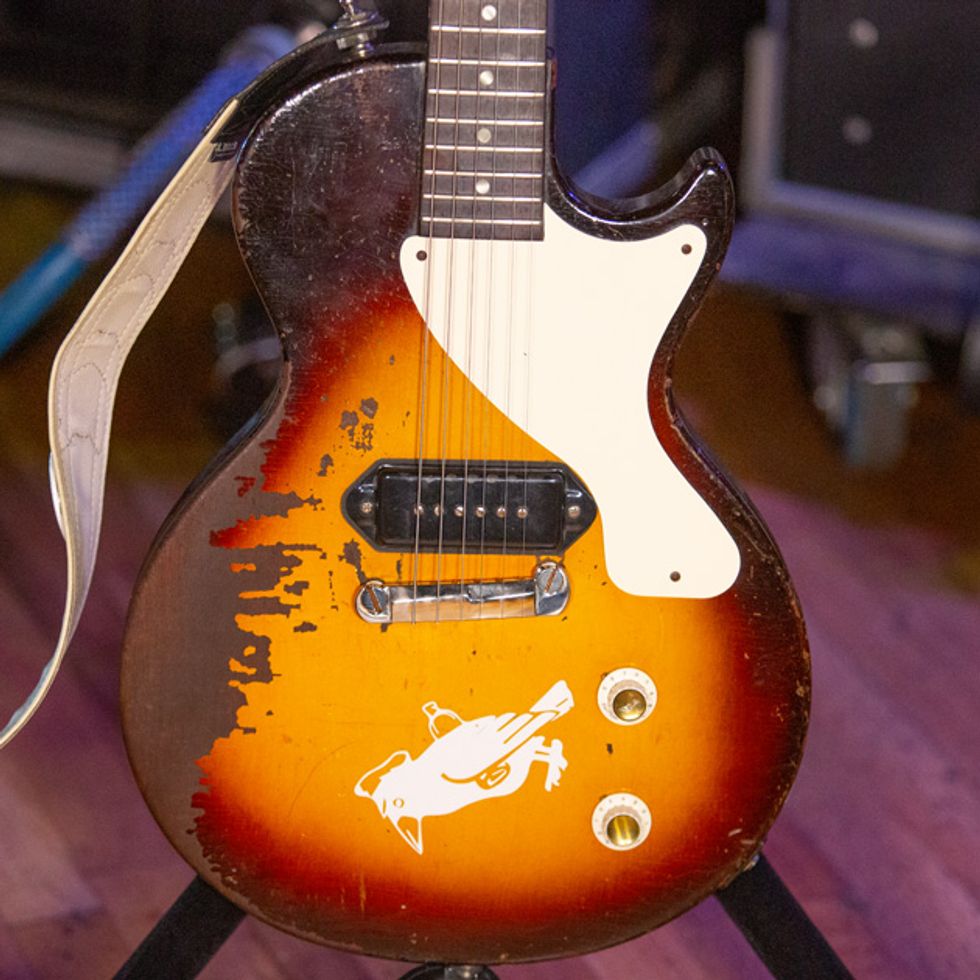
Brian Baker has been a fixture of Bad Religion since 1994 and this 1955 Gibson Les Paul Junior has been along for much of that ride. Aside from the hunk of woods used for the body, neck, and fretboard, there are no original parts on this guitar. The pickup is a Seymour Duncan Custom Shop Dog-Ear P-90 made with a ceramic magnet. Baker prefers these pickups because of the “glass brilliance, 3-D quality of their sound, and overall tonal definition throughout the sweep of the volume knob.” The bridge is now a Music City Bridge Stud Finder that was designed by Nashville’s Joe Glaser.
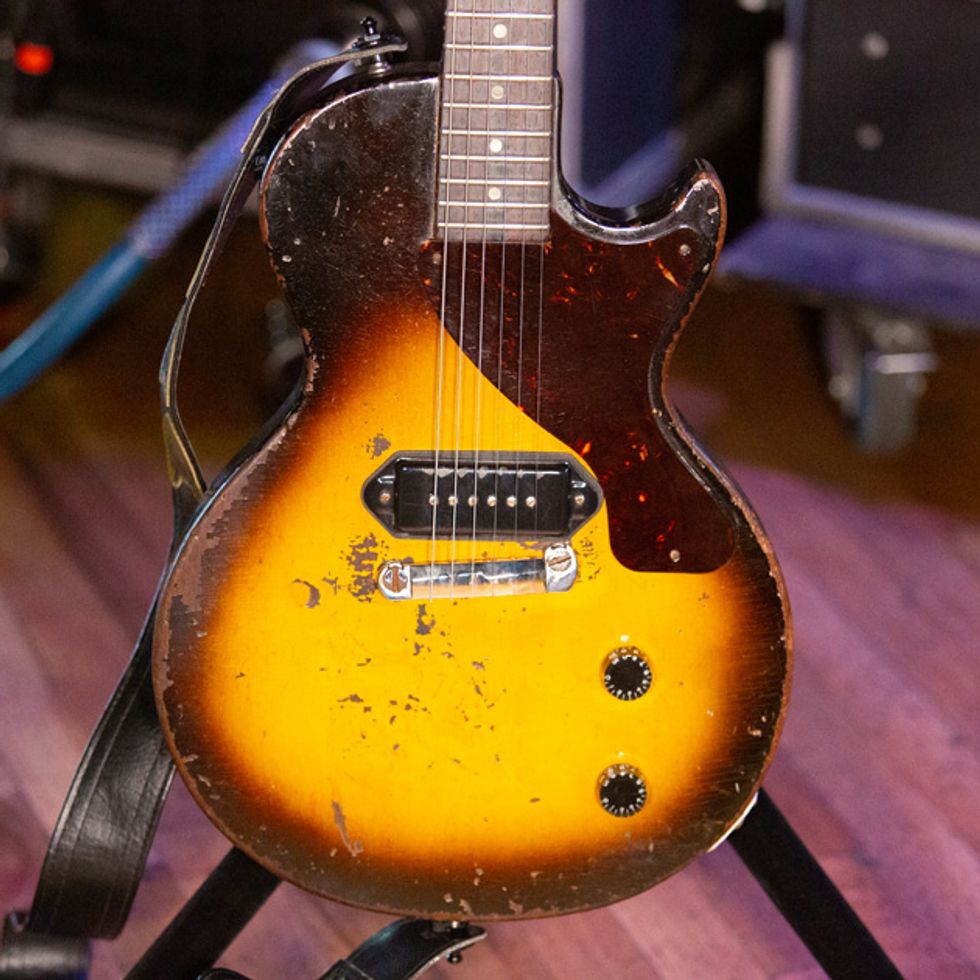
Here’s another 1955 Gibson Les Paul Junior for Brian Baker. He won’t say if either ’55 is his No. 1 as he goes back and forth—it typically depends on what one is less temperamental that day.
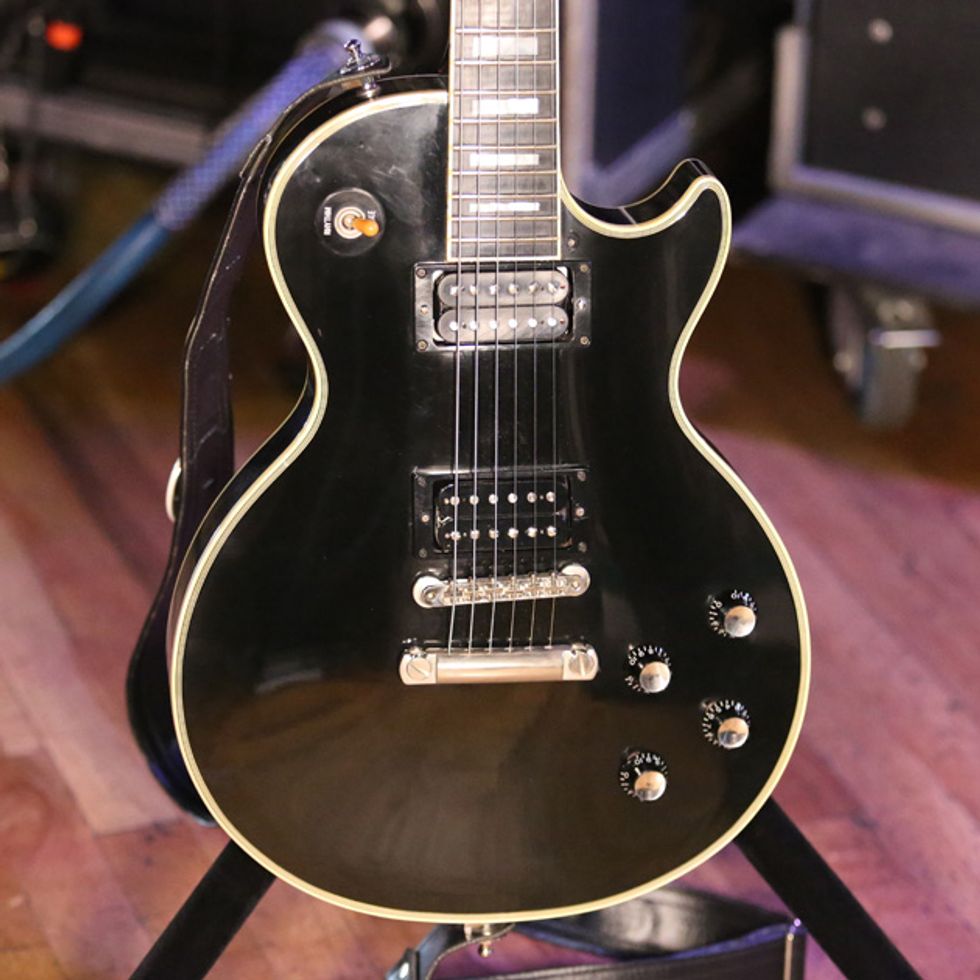
This run of dates saw Brian Baker go into his vault and bring along some humbucker-equipped guitars like this 2002 Gibson Custom Shop Les Paul Custom. It is loaded with a set of Seymour Duncan Custom ’buckers.
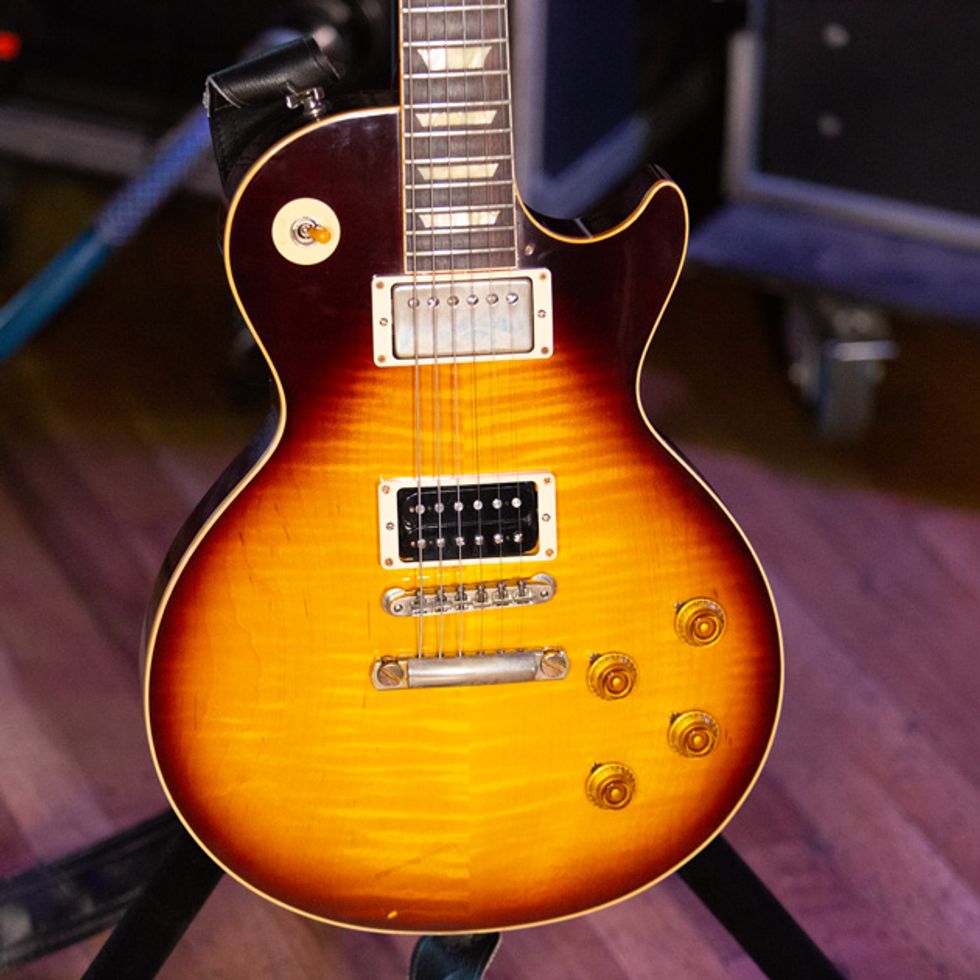
And one of Brian Baker’s newest 6-string friends is this Chicago Music Exchange Exclusive Gibson Custom Shop “R9” Les Paul Standard that’s based on a 1959 model. He spends most of the time on the bridge pickup, but when it comes time for the solo in “Sorrow,” he’ll go with the rhythm pickup because that’s how Brett Gurewitz recorded it in 2001.

Brian Baker tours with a pair of early 1990s Marshall 1987X 50-watt plexi handwired Reissues. Both amps have the “dookie” mod (explained in our Green Day Rig Rundown) that creates a cascading gain structure that allows you to control the input volume. After watching the AC/DC Rig Rundown, Baker took the idea of the Kikusui PCR4000M Power Supply that Angus Young used and applied it to his rig. He doesn’t have the financial standing to tour with those, but after some online sleuthing, he found a cheaper solution in the AmpRX BrownBox that gives his amp safe, consistent power. (One of the heads was actually a loner from Billie Joe Armstrong, but fortunately for Baker, Armstrong hasn’t missed the head so he’s been enjoying it onstage for years.)
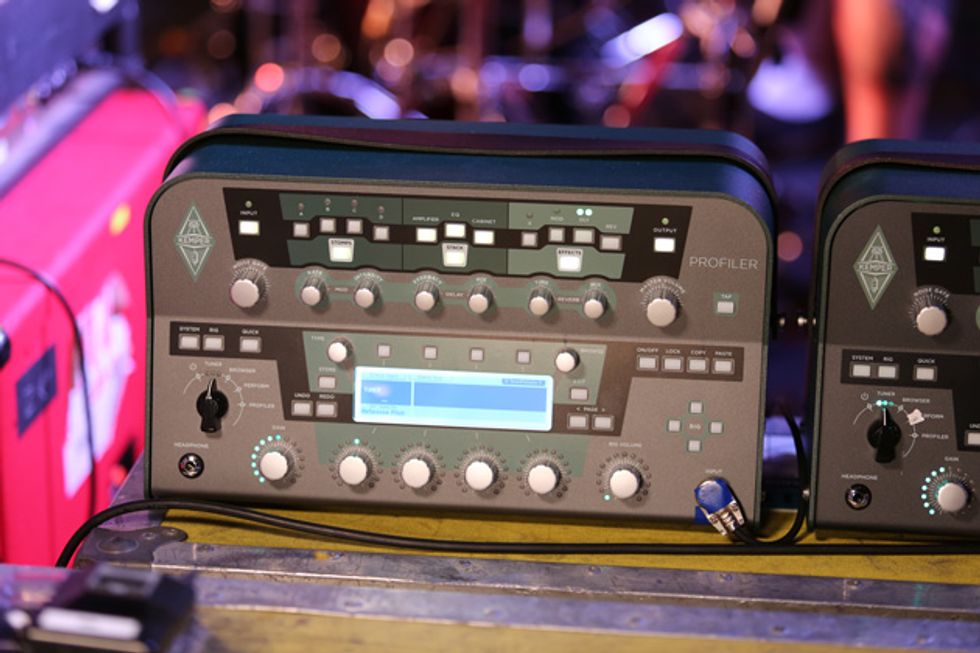
And to give the FOH engineer some live options, Brian Baker totes along a Kemper Profiler so he can choose between the tube amps or the modeling rig, depending how it sounds in each room each night.
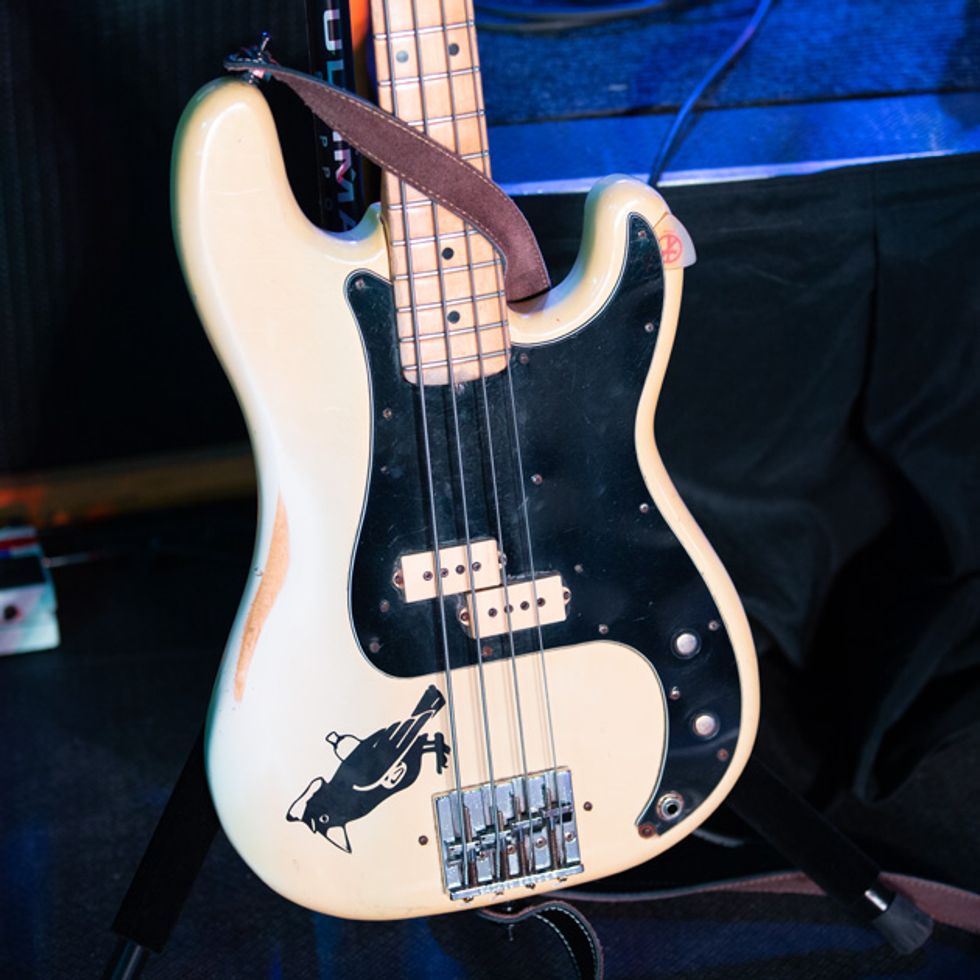
The self-proclaimed “tallest member” in Bad Religion is cofounder Jay Bentley and he’s played bass from 1980-1982 and then again from 1986 through today. For Bentley, “my ideal bass sound is a P with an ash body and maple neck.” This 1977 Fender Precision has been upgraded with a DiMarzio DP122 pickup and Badass bridge. And as you can see, it has no controls, because as Bentley says, “turning down isn’t an option in this band!”
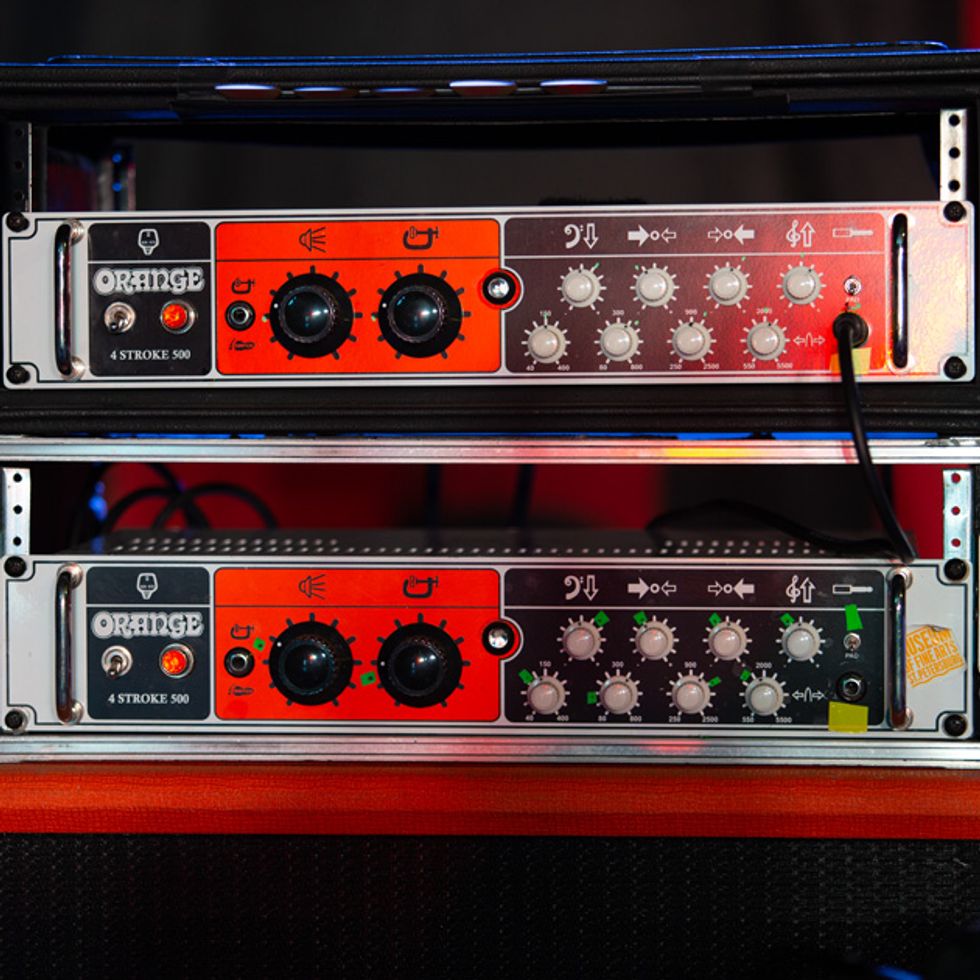
A longtime user of Ampeg tube heads, Jay Bentley was frustrated with his tone after Dimkich and Baker predominately had shifted towards P-90s. The change left Bentley lost in the mix, so rather than reconfigure his bass, he opted to go after something different in the amp department. He landed on the Orange 4 Stroke 500 because it’s reliable, lightweight, and has a potent growl.
Click below to listen wherever you get your podcasts:
 |  |
 |  |
D'Addario Trigger Capo:https://www.daddario.com/TriggerCaposRR
Oni’s guitar duo cover 16 strings between them with a pair of Neural Quad Cortexes and some choice patches.
Jared Dines had been writing for Canadian metalcore outfit Oni—fronted by Jake Oni—for a few years before Jake invited Dines to join him onstage. Dines had just two days to learn the entire set before rehearsals began. But Eric Palmer can one-up him. He was teching for the band when Jake conscripted him—with just one day to pick up the set before a performance. Palmer rose to the occasion, and he and Dines have formed Oni’s two-guitar tornado for the past year.
Ahead of their gig at Nashville’s Brooklyn Bowl in December, Dines and Palmer walked PG’s Chris Kies through their spartan, one-guitar rigs—no backups, no mercy.
Brought to you by D’Addario.8 is Great
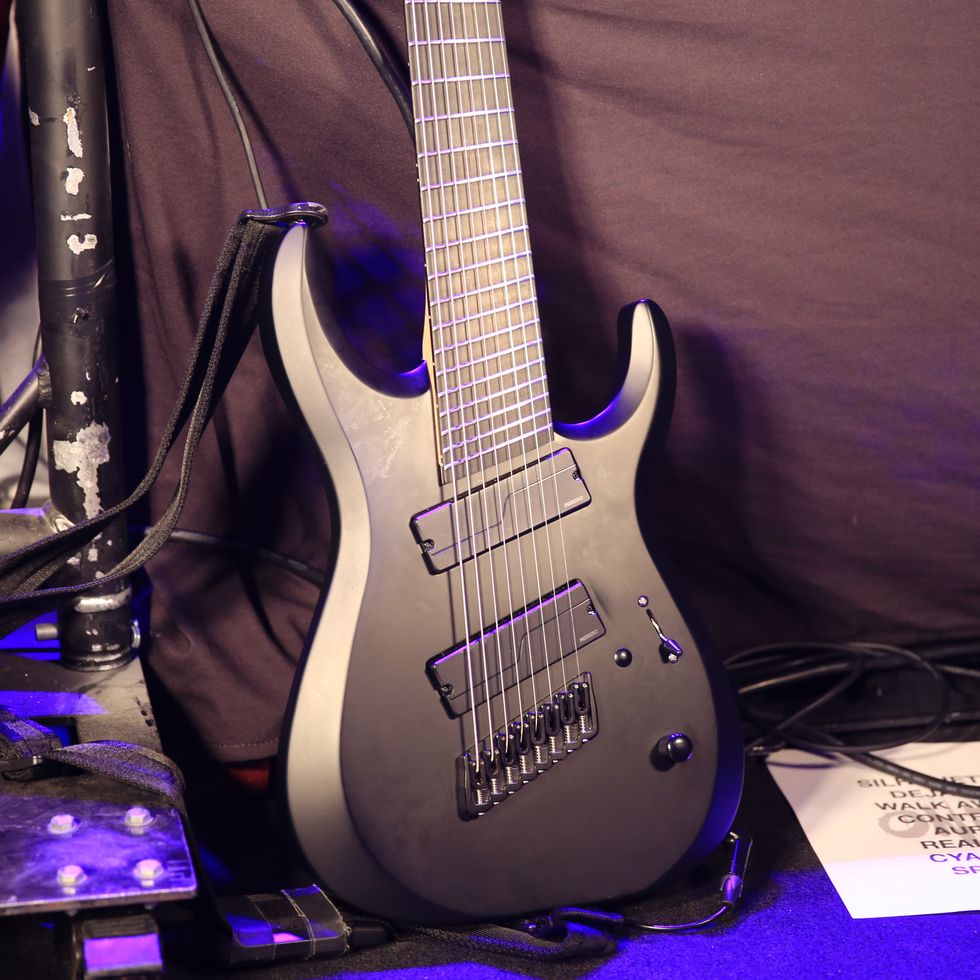
Eric Palmer is used to playing 7-string axes, so this limited-run 8-string Jackson Concept Series MDK8 HT8 MS Modern Dinky didn’t take long to get used to. The Korea-made flamethrower has a basswood body, a 3-piece maple/wenge/mapleneck, and a compound radius ebony fretboard (12" to 16"). It also boasts a dual scale length—25.5" to 27.5"—and is loaded with Fishman Fluence Modern pickups, which feature two voicings selected by a push-pull switch. Palmer had this one upgraded to a 5-way switch to access split-coil sounds, and he got rid of the tone knob. “All gas, no brakes,” as PG’s Perry Bean would say.
Petrucci Power
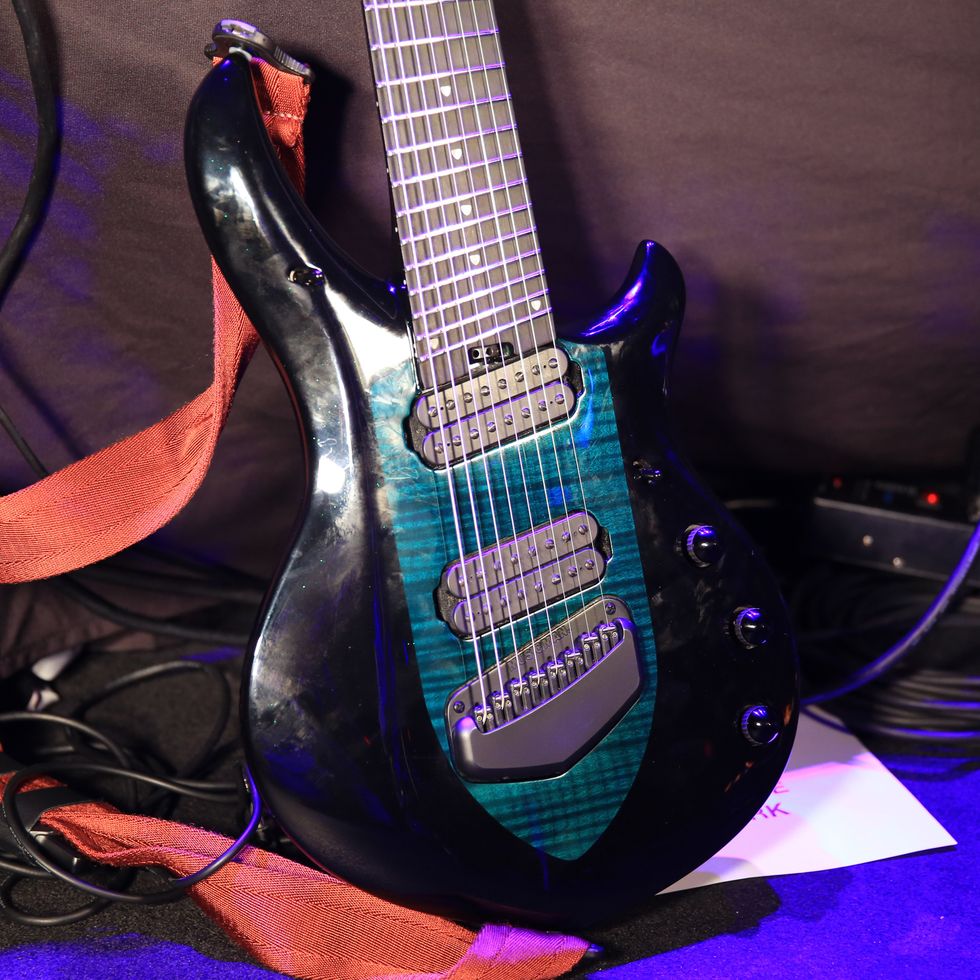
Jared Dines also needed an 8-string for Oni, so Ernie Ball sent him this Music Man Majesty 8, a John Petrucci signature model. It’s got Fishman’s Powerbridge piezo system, which sees action on the song “Control.” Dines attached his own string clamp behind the nut to halt noise.
Double Quads
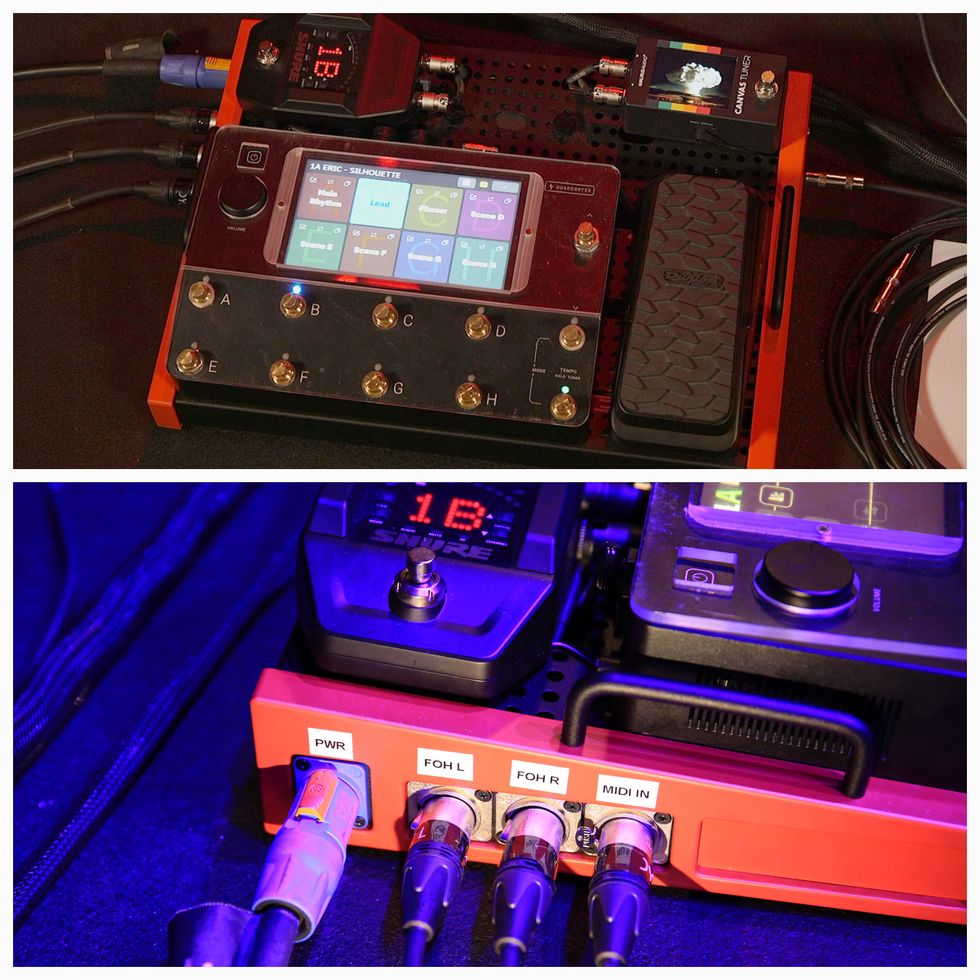
Dines and Palmer both rely on Neural DSP Quad Cortexes on this Oni tour. Their units are mounted on Temple Audio pedalboards, and both guitarists use the Architecture: Gojira X patch for their heavy sounds, and a Roland Jazz Chorus sound for cleans. Both Dines and Palmer employ a MIDI switching system that they pulled from Aaron Marshall’s Rig Rundown, and run their signals from direct to front of house.
In our second installment with Santa Cruz Guitar Company founder Richard Hoover, the master luthier takes PG's John Bohlinger through the detailed (and scientific) process of analyzing, shifting and "tuning" the guitar's top before repeating the process when the back and sides are joined, and once again when introducing the neck to the instrument build while focusing on keeping everything harmoniously synergized and "tuned."
Axis, Cutlass, Sting Rays, oh my! There were all those and more new stylings at the Sterling by Music Man & Ernie Ball both this year as we got a tour of all their affordable options that are out or will be coming out in 2025. We saw new stylings on signature sweets for James Valentine, Steve Lukather, Ryan "Fluff" Bruce, Pete Wentz, Tosin Abasi, Jason Richardson and more!
Sterling By Music Man StingRay Plus Electric Guitar - Black
The StingRay Plus takes the classic StingRay guitar to new heights with a roasted maple neck, versatile P90 pickups, and a built-in volume boost. A matching headstock and sleek block inlays complete the polished, old-school look. Experience the next level of tone and performance with the StingRay Plus.
The PRS Standard is one of the two models that started PRS Guitars back in 1985. It has been out of the line up for more than ten years and coming back for the 40th Anniversary.
PRS Standard 24 Satin Electric Guitar - Satin Red Apple Metallic
The PRS Standard 24 features many classic PRS specifications, including a 25” scale length, Pattern Thin neck with a 24-fret, 10” radius rosewood fretboard, PRS Patented Tremolo, and PRS Phase III tuners with unplated brass shafts. Under the hood, the PRS Standard 24 is outfitted with the all-new PRS DMO treble and bass pickups with volume and tone controls and a 5-way blade switch. PRS DMO (Dynamic, Musical, Open) pickups have a “wide open” sound with vocal character, meaning they deliver clear, pleasant-sounding tones across a wide range of frequencies (bass to treble) in each pickup. DMO pickups were personally designed by Paul Reed Smith and the PRS New Products Engineering team. From our own hands-on research into coveted vintage pickup models to advancements in signal analyzation and “tuning” technology, these pickups incorporate every detail of pickup knowledge PRS has gained in recent years of R&D.





